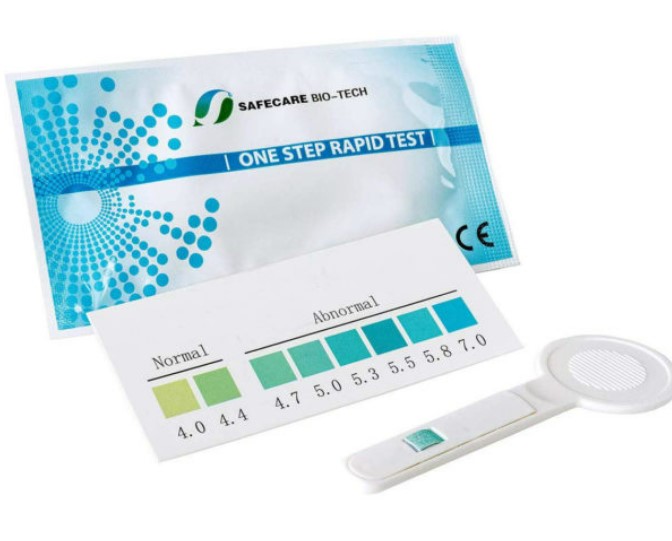Womens Health
5 x Bacterial Vaginosis (BV) and Thrush pH Rapid Test Devices
Quantity:
In Stock
Price:£
9.99
- Use each applicator only once.
- Use only for intended purposes, not for consumption.
- The swab determines only the pH value and not the presence of any infection.
- An acidic pH value does not provide 100% protection against infections. If symptoms persist despite a normal pH value, consult a doctor.
- Certain factors may temporarily alter vaginal pH levels, potentially leading to false results. Consider the following time limits before conducting the test or taking a measurement:
- Wait at least 12 hours after sexual activity.
- Wait at least 12 hours after using vaginal medical products (e.g., suppositories, creams, gels).
- Wait only 3-4 days after the end of a period if not pregnant.
- Wait at least 15 minutes after urination, as residual urine can affect test results.
- Improper use of the test applicator may cause hymen tearing in sexually inactive women, similar to the use of a tampon
Test Procedure:
Determining the vaginal pH level is simple and completely pain-free. Relax and follow the steps below exactly.
Hand Washing: Wash your hands before starting the test.
Preparing the Test: Open the package, remove a test, and open the foil. Only touch the applicator in the round handle area.
Handling the Applicator: Hold the applicator in the handle area between your thumb and index finger, as shown in the diagram. Ensure your thumb is on the side opposite to the pH measurement zone. This ensures each test is performed correctly. Avoid contact of the pH measurement zone with other liquids.
Positioning: Sit with your knees spread or with one foot on the toilet seat or other firm surface.
Preparation: Use your free hand to gently spread the vaginal opening, carefully separating the outer labia.
Insertion: Insert the vaginal applicator gently into the vagina, similar to inserting a tampon (approximately 1 inch into the vagina—but not beyond the round handle area). Insertion is pain-free.
Moistening: Press the inserted tube against the back wall of the vagina with light pressure for approximately 10 seconds (pushing back towards the rectum), ensuring the pH measurement zone becomes well moistened. Sufficient moisture is crucial for accurate test evaluation.
Removal: Carefully remove the vaginal applicator from the vagina. Read the result immediately after removal, while the measurement zone is still damp. Compare the color in the pH measurement zone with the color scale and note the value most similar to the measured pH level. After evaluation, dispose of the used applicator with regular household waste.
Important: If the pH measurement does not display a uniform color after the test, this indicates improper test performance. Possible causes include insufficient moistening of the pH measurement zone with vaginal secretion. In such cases, you may repeat the measurement with the same vaginal applicator or use a new test.
For product information, click here
